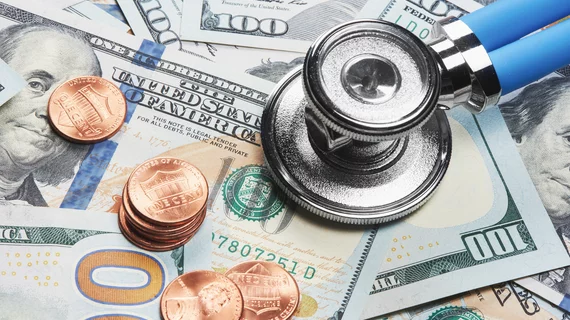S&P downgrades radiology provider Envision Healthcare, citing ongoing cash crunch
Standard & Poor’s downgraded radiology provider Envision Healthcare on Monday, citing the company’s ongoing cash crunch and failure to hit a recent financial filing deadline.
The Nashville, Tennessee-based multispecialty group informed its lenders on April 1 that it would not be able to furnish statements and projections within 90 days of the year end. This triggered a default under the terms of its borrowing agreement and CreditWatch warning from S&P.
“We expect the company’s liquidity position to meaningfully deteriorate over the next 12 months under the existing capital structure,” analysts Alessio Di Francesco and Arthur C. Wong wrote April 4, later adding that they anticipate Envision will file the documents within the 30-day grace period. “Failure to do so, could result in an acceleration of its debt obligations and a payment default, but we do not expect that to occur,” they added later.
S&P labeled Envision’s liquidity as “less than adequate” and believes it will be unable to repay $700 million owed October 2023, unless it refinances or extends the maturity date. The company lists $765 million in cash on its balance sheet. But $200 million-plus of that is held in joint ventures and unavailable to Envision. Discretionary cash flow deficits are expected to leave the provider group with less than $100 million by 2022’s conclusion. And while experts expect the picture to improve next year, they still predict that Envision won’t have enough funds to repay loans that list company assets as collateral, nor its revolving credit line.
“The CreditWatch [warning] with negative implications reflects the probability of further downgrades within the next 90 days if it appears inevitable that Envision will face a payment default or undertake an exchange offer or similar restructuring we consider distressed,” Di Francesco and Wong added.
Backed by investment firm KKR, Envision employs more than 25,000 clinicians delivering care to 32 million patients annually. That includes roughly 800 radiologists as of last year reading 10 million studies, alongside emergency medicine specialists, anesthesiologists, hospitalists and neonatologists.
A company representative declined to comment on the S&P report Monday.

